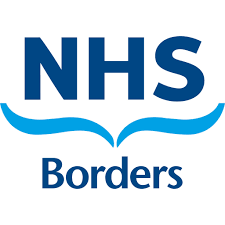MAINTENANCE FLUID
Maintenance IV fluid should be given via volumetric pump.
Always prescribe as ml/hr not ‘x hourly’ bags.
Never give maintenance fluids at more than 100ml/hour. - Do not "speed up" bags - instead give replacement for losses.
Table 1: Maintenance Fluid Requirement
| Weight Kg |
Fluid requirement ml/24hr |
Rate ml/hr |
| 35 – 44 |
1200 |
50 |
| 45 – 54 |
1500 |
65 |
| 55 – 64 |
1800 |
75 |
| 65 - 74 |
2100 |
85 |
| >/= 75 |
2400 |
100 (max) |
For frail, elderly patients with renal impairment or cardiac failure and patients who are malnourished or at risk of re-feeding syndrome, consider giving less fluid: 20-25ml/kg/day (NICE guidelines). Consult a senior doctor for fluid advice. Give Pabrinex IV if at risk of re-feeding syndrome.
Preferred maintenance fluids:
0.18%saline/4% Glucose, with or without added potassium KCl 40mmol/L.
Give KCl 40 mmols/L unless K+ >/= 5.0mmol/L.
- Prescribe each 1000ml bag with added potassium (KCl 40mmol) if patient has normal or low potassium. Aim to give about 1mmol/kg/day of K+.
- If the serum potassium is above 5.0mmol/l or rising quickly do not give potassium containing fluids.
- Patients with renal failure - consult senior doctor.
This fluid if given at the correct rate (Table 1) provides all water, Na+ and K+
requirements until the patient can eat and drink or be fed.
Excess volumes of this fluid (or any fluid) may cause hyponatraemia.
If sodium is < 132mmol/L: get senior clinician input.
Use Plasmalyte148 for maintenance. DO NOT use 0.45% saline with 4% Dextrose.
If sodium is < 120mmol/L this is a medical emergency. High concentrations of saline may be required.
REPLACEMENT FLUID
Fluid losses may be due to diarrhoea, vomiting, fistulae, drain output, bile leaks, high stoma output, ileus, blood loss, excessive sweating or excess urine. Inflammatory losses (redistribution) in the tissues are hard to quantify and are common in pancreatitis, sepsis, burns and abdominal emergencies.
It is vital to replace high gastro-intestinal (GI) losses. Patients may otherwise develop severe metabolic derangement with acidosis or alkalosis and hypokalaemia.
Hypochloraemia occurs with upper GI losses. Check blood gases in these patients and request chloride with U&Es.
Urinary and insensible losses are covered by the maintenance part of the prescription. In the recovery phase patients start to pass more urine as they mobilise excess fluid.
Hyponatraemia is common. In the absence of large GI losses, causes are
too much fluid, SIADH or chronic diuretic use. Treatment of hyponatraemia is complex and requires senior input. A sodium of <125mmol/L is dangerous. 0.9% NaCl + KC
Potassium replacement A potassium level in the normal range does not mean that there is no total body potassium deficit. Give K+, if clinically indicated, in maintenance fluid. Potassium-containing fluids must be given via a pump.
Outside of ITU: the potassium content of IV fluids must not exceed 40mmol/L and it must not be given at a rate greater than 10mmol/hour. There may be occasional exceptions to this – refer to the Potassium Chloride IV drug monograph.
In ITU: potassium can be given neat - KCl (2mmol/ml) via a central line at a maximum rate of 10 ml/hr (20mmol/hr). ECG monitoring is recommended. Occasionally it may also be necessary to administer this in a Level 1 HDU area. This must be under the instruction of a senior clinician, given by a central venous catheter and under continuous ECG monitoring.
Estimate replacement fluid/electrolyte requirements (see table 2) by adding up all the losses over the previous 24 hours and give this volume as Plasmalyte 148
Use 0.9% NaCl with KCI for upper GI or bile loss (high NaCl content). Otherwise avoid it as it causes fluid retention.
Diarrhoea may lead to potassium loss.
Normal plasma osmolality is 285-295 mosm/l.
Table 2: Normal volumes of secretions and their electrolyte contents
| Fluid/Content/L |
Na
mmol/L
|
K
mmol/L
|
Cl
mmol/L |
Bic
mmol/L |
Normal vol /
24hrs |
| Gastric contents |
50 |
15 |
140 |
0-15 |
2-3 litres |
| Bile |
145 |
5 |
100 |
138 |
0.5 litres |
| Small Bowel Content |
140 |
11 |
70-130 |
variable |
variable |
| Ileostomy |
50 |
4 |
25 |
- |
0.5 litres |
| Colostomy |
60 |
15 |
40 |
- |
0.1-0.2 litres |
| Diarrhoea |
30-140 |
30-170 |
- |
20-80 |
abnormal |


